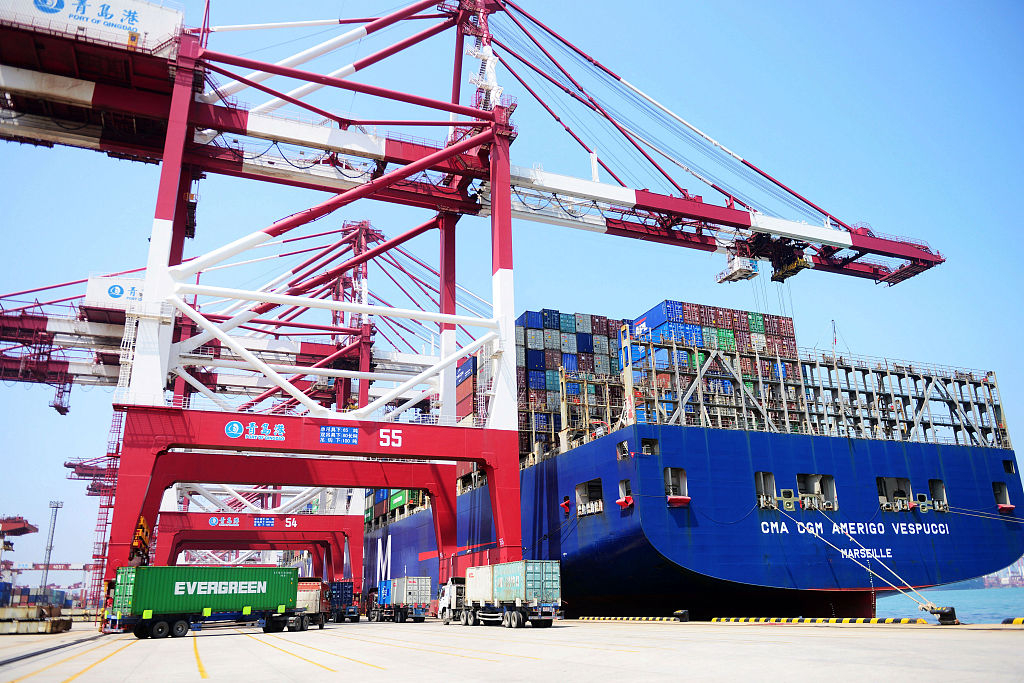
Opinion
17:20, 11-Jun-2019
A world without America?
John Gong

Editor's Note: John Gong is a research fellow at Charhar Institute and professor at the University of International Business and Economics. The article reflects the author's opinion, and not necessarily the views of CGTN.
China's May 2019 Customs that was recently released paints a trade picture that seduces me to contemplate an intriguing question, and perhaps also the unthinkable. What would happen if China entirely writes off trade with America?
I know the global value chain production theory holds sacrosanct among many trade economists, and I would be accused of being an autarkist. I know corporate America's operation in China represents something like 400 billion U.S. dollars of business interest, and they will pound me for being nationalistic.
But one of the goals set by U.S. President Donald Trump and a few people around him, for instance, U.S. trade representative Robert Lighthizer and trade advisor Peter Navarro, is to precisely whip corporate America back to the U.S., or if not at least out of China.
So this is indeed a scenario that has a real probability of becoming true. A few days ago, I gave a speech at the "China and World Order" conference in Singapore sponsored jointly by Harvard University, National University of Singapore and China Science Academy.
In that speech, I did propose, perhaps too audaciously, the scenario of a bifurcated world order comprising two spheres, one being China-centric and one being U.S.-centric. Well, the May Customs data provides the empirical basis for assessing the real impact of that possible scenario on China's economy, particularly China's exports.

Containers at the port of Qingdao, Shandong Province, June 10, 2019. /VCG Photo
Containers at the port of Qingdao, Shandong Province, June 10, 2019. /VCG Photo
Even amidst a very difficult time caused by both the trade war and the slowing global economy, China's export in May still booked a 7.7 percent increase year-on-year. Export to the European Union and ASEAN countries increased by more than 10 percent. Export to BRI-participating countries other than these two regions also saw significant increases.
The trade with the U.S. was expectedly dropping, and I think it will keep dropping in the face of the 25 percent tariffs introduced on 200 billion U.S. dollars worth of Chinese goods so far.
Export to the U.S. dropped by 3.2 percent. But America's trade deficit with China keeps expanding, by almost 12 percent in May compared with the same period last year, primarily because import from the U.S. was curtailed dramatically, by nearly 26 percent.
China's foreign exchange reserve still stands at a venerable 3.1 trillion U.S. dollars level. That is the cushion that the Chinese side can rely on to deal with the worsening current account balance with the U.S. if the current trend continues.
How critical is the U.S. market to China? This question can be found in other statistics in the press release. Of the 200 billion U.S. dollars exports subject to the current tariffs, only 124 items see a U.S. market accounting for more than 50 percent of the total overseas market.
That means that only these exports are likely to be heavily hit. Reduced export of other products to the U.S. should be able to be picked up relatively easily by increases in other markets.

Chinese-made hats are displayed for sale at a Manhattan department store in New York City, U.S., May 7, 2019. /VCG Photo
Chinese-made hats are displayed for sale at a Manhattan department store in New York City, U.S., May 7, 2019. /VCG Photo
In short, the American market is not as critical as some experts have been saying. Today China's American trade only accounts for about 11 percent of China's total good exports, as opposed to over 50 percent decades ago.
However, don't get me wrong. I am not advocating a wholesale economic decoupling from America. On the contrary, I have been steadfastly arguing for reaching a trade agreement that benefits both sides.
The Thucydides traps in history have never seen the extent of economic intertwining and trade complementarity as we are currently seeing between China and the United States. So this so-called Thucydides trap is different. It means there is still hope of escaping from that trap, as we have 800 billion U.S. dollars trade serving as ballast for our bilateral relations.
If the Trump Administration wants to throw that ballast into the Pacific Ocean, so be it. We still have the European market. We still have the ASEAN market. We still have markets in the Middle East, in Africa and South America.
If unfortunately we indeed ended up in that bifurcated world, the China-centric trading bloc would, in fact, be a much larger one vis-à-vis the U.S.-centric trading bloc, which is mostly with Canada and Mexico. Now it is up to President Trump to make the call if this is something he wants for America.
(If you want to contribute and have specific expertise, please contact us at opinions@cgtn.com.)

SITEMAP
Copyright © 2018 CGTN. Beijing ICP prepared NO.16065310-3
Copyright © 2018 CGTN. Beijing ICP prepared NO.16065310-3